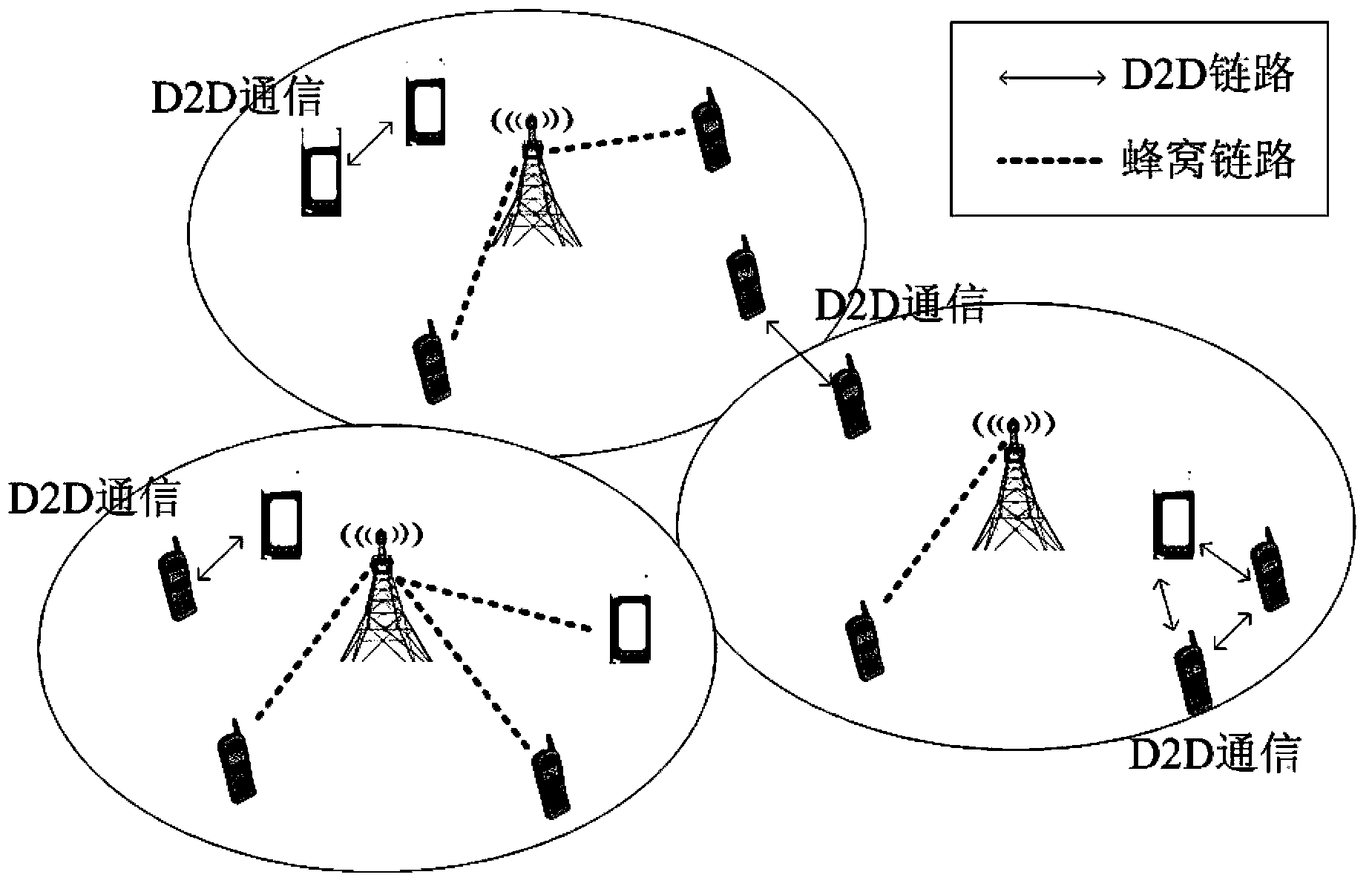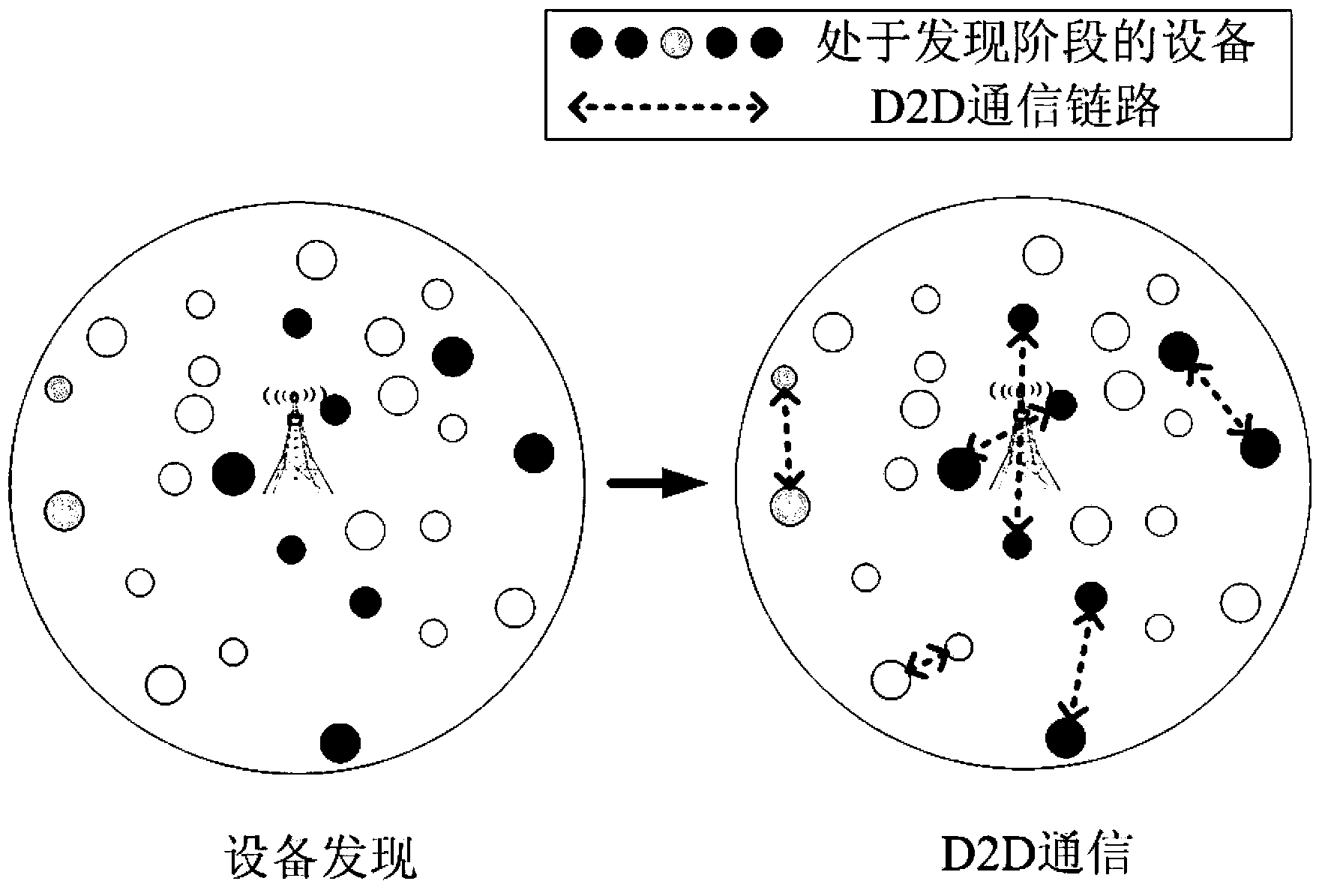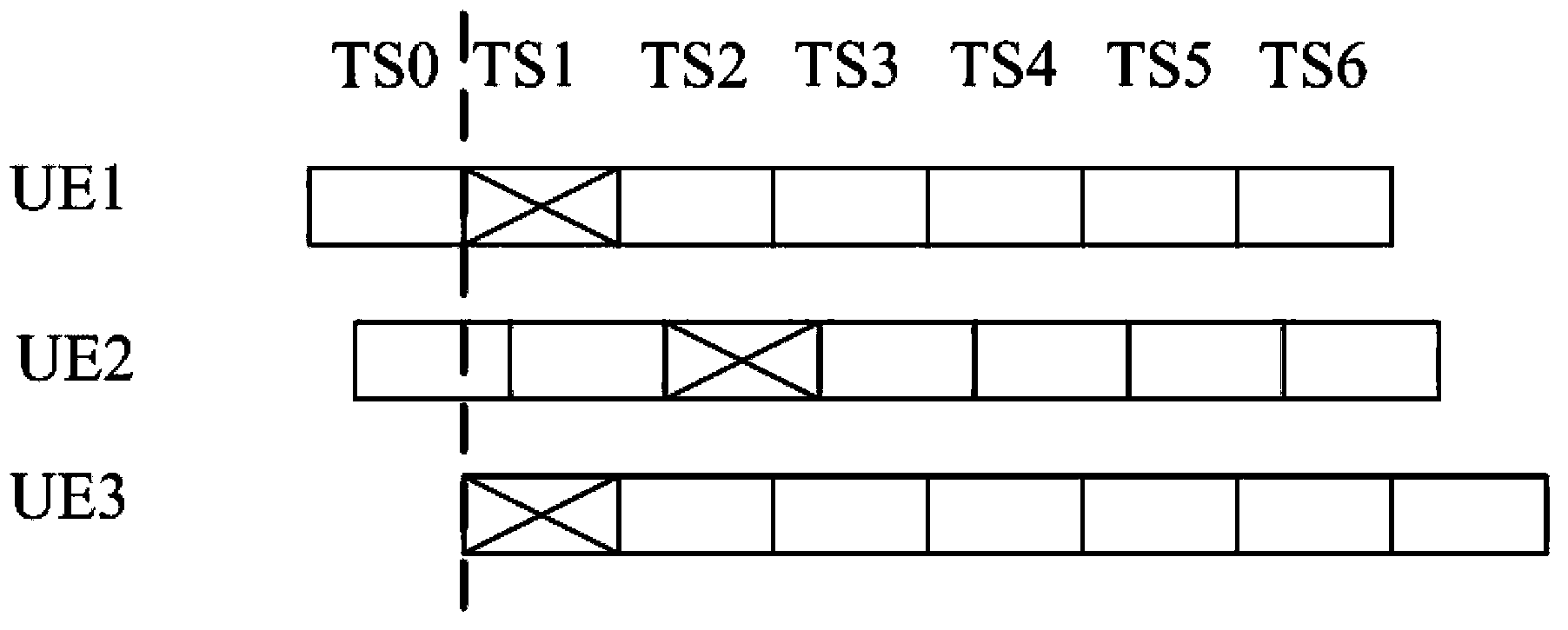Base station assisted method for discovering equipment in D2D communication system
A communication system and device discovery technology, applied in the field of IMT-Advanced, can solve the problems of waste of time-frequency resources, prolongation of the discovery process cycle, unsynchronized correction, etc., to improve speed and accuracy, reduce interference and collision, and improve utilization rate effect
- Summary
- Abstract
- Description
- Claims
- Application Information
AI Technical Summary
Problems solved by technology
Method used
Image
Examples
Embodiment Construction
[0051] In the present invention, in order to match with the Long Term Evolution (Long Term Evolution, LTE) system, we define the time-frequency resource used for sending and detecting the discovery signal as a resource block (resource block, RB). In the time domain, it is a time slot (time slot) with a length of 0.5ms, and in the frequency domain, it occupies 12 consecutive OFDM subcarriers, namely 180KHz. The frequency resource used for sending the discovery signal is set by an evolved base station (evolved Node B, eNB) according to the specific terminal equipment that needs services, and there is no special requirement. If there are many devices that need to be discovered, the eNB will allocate more time slots and frequency resources to perform this operation. Considering that devices are separated by a certain distance, we allow terminal devices that are far apart to a certain extent to reuse the same time-frequency resources to send discovery signals. In the same period, ...
PUM
 Login to View More
Login to View More Abstract
Description
Claims
Application Information
 Login to View More
Login to View More - R&D
- Intellectual Property
- Life Sciences
- Materials
- Tech Scout
- Unparalleled Data Quality
- Higher Quality Content
- 60% Fewer Hallucinations
Browse by: Latest US Patents, China's latest patents, Technical Efficacy Thesaurus, Application Domain, Technology Topic, Popular Technical Reports.
© 2025 PatSnap. All rights reserved.Legal|Privacy policy|Modern Slavery Act Transparency Statement|Sitemap|About US| Contact US: help@patsnap.com



